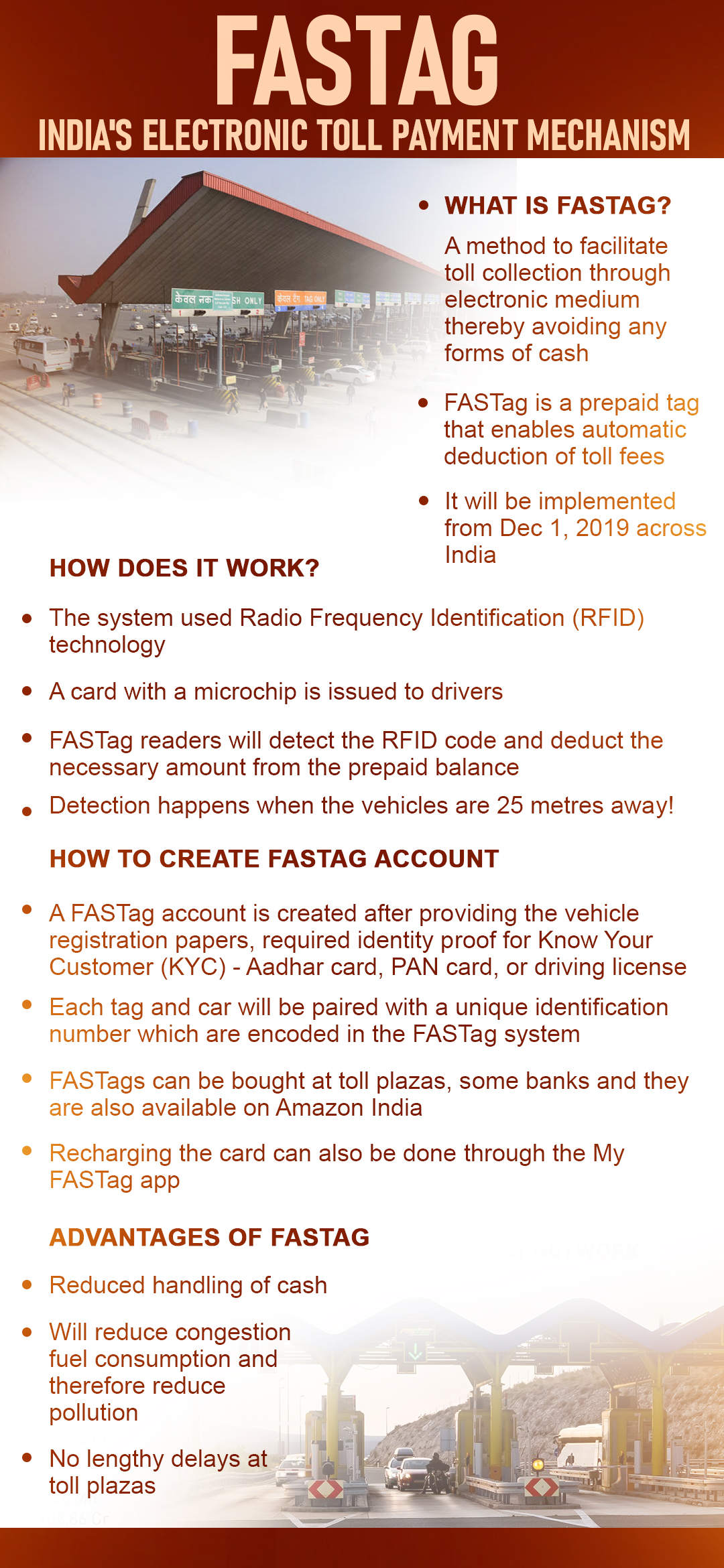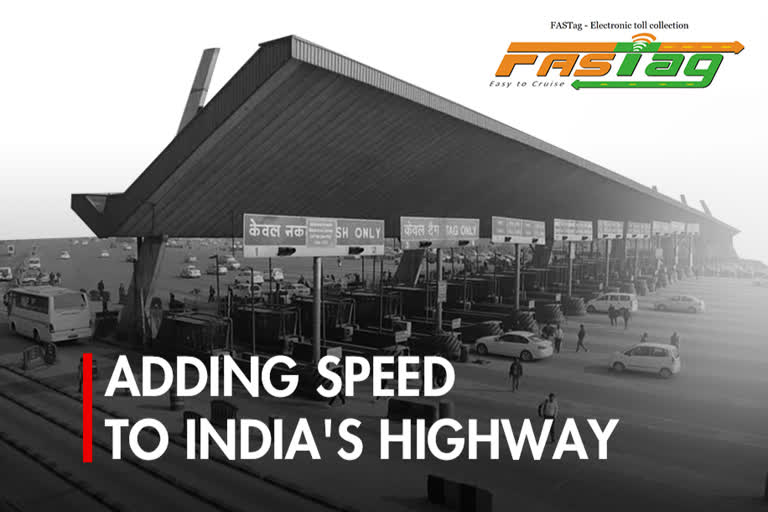Hyderabad: India is slowly but steadily inching towards a digital set up and the cashless regime will get a major boost after the implementation of FASTag system. FASTag is a method to facilitate toll collection through electronic medium thereby avoiding any forms of paper money involved. FASTag will become mandatory from December 1, 2019 and payments at all the toll plazas on national highways will be through FASTag.
What are FASTags
FASTag is a prepaid tag that enables automatic deduction of toll fee and allows the vehicle to pass through the plaza without stopping for cash transaction. As you drive through any toll plaza, there will be dedicated lanes that have FASTag readers installed overhead—and as your vehicle passes beneath them, the RFID code is detected, read, the necessary amount deducted from the prepaid balance and your journey through the toll plaza is authenticated.
All without you having to stop, interact with a human being at a toll plaza or having to pay cash. FASTags would enable all vehicles pay toll fees digitally, while providing convenience of faster movement across toll plazas.
This in turn would help in significantly eliminate long queues at toll plazas with consequent saving in fuel and time. FASTags would also enable toll payments across State and district highways and even for parking in cities in the near future. This would help commuters in seamless movement across city parking to State to national highways.
The system at the toll plaza uses Radio Frequency Identification (RFID) technology to deduct the payment from the user's account. The reader at the toll plaza detects the card when the vehicle is 25 metres away.
The Ministry of Road Transport and Highway has announced that all lanes at all toll plazas on national highways will be dedicated exclusive FASTag lanes from December 1, 2019, and non-FASTag users will be charged double the fee if they pass through these lanes, according to the National Highway Fee (Determination of Rates and Collection) Rules, 2008.

RFID Technology
This is the wireless communication standard that reads the data that is encoded in tags or labels, by a reader device specifically made for that purpose. The tags have an integrated circuit and an antenna (though you may not be able to see either) that create the wireless communication method.
Each tag and car pairing works with the GS1 unique identification numbers, which are encoded in the FASTags. That way, each vehicle is identified in a standardized and common manner that is understood by the digital payments systems deployed by state and central governments, the Traffic Police, insurance companies and toll collection authorities.
How is a FASTag account created
A FASTag account is created after providing the vehicle registration papers, required identity proof for Know Your Customer (KYC) - Aadhar card, PAN card, or driving license - and an address proof. A passport size photo of the individual is also required. FASTags can be bought at toll plazas, some banks and they are also available on Amazon India.
Seven banks are currently linked with FASTag. Recharging the card can also be done through the My FASTag app.
Advantages :
The first is the reduced handling of cash, which falls perfectly within the move to make as many retail payments electronic as possible. The second is reduced cash handling by the users, the concessionaire as well as the authorities running toll plazas.
The third is to reduce waiting times at toll plazas across India. That in turn also helps reduce congestion, fuel consumption and therefore the pollution as well.
One of the leading private sector bank was the pioneer to implement ETC pilot program. The bank partnered with Ministry of Road Transport and Highways (MoRTH), NHAI and IHMCL for launch of ETC on National Highways. In April 2013, the first ETC was set up on Mumbai-Ahmedabad highway with six toll plazas and three logistic providers.
The RFID based FASTag is affixed on the windscreen of the vehicle. It allows for direct payment of fee from the prepaid or savings account linked to it, and enables vehicles to drive through without stopping for transactions.
This was a closed-loop solution with FASTags implemented exclusively working on the bank’s acquired toll plazas. Implementation of e-tolling would help the vehicle users reduce the fuel cost and cut the average waiting time by around 10 minutes at the toll plazas.



